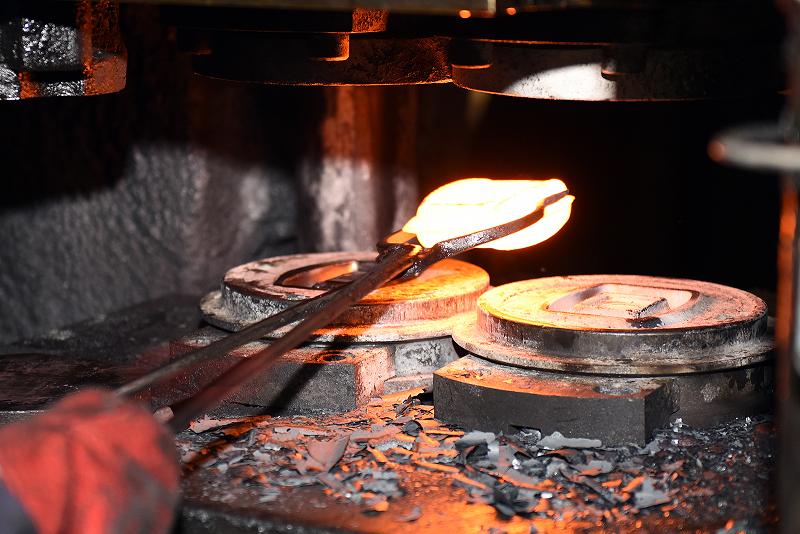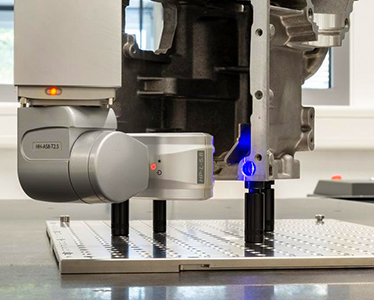Call Us
+86-19858305627
Email Us
sales@maple-machinery.com
What are the advantages of forging over casting?
2023-07-27
Strength
Maple is highly targeted. Forgings have the greatest strength and structural integrity for the same material and design, mainly because of grain consistency. Castings can withstand low shear and tensile stresses, but cannot withstand large shear loads, despite having excellent compressive loads.
Since forging produces products with higher strength than casting, it is suitable for load-bearing applications when evaluating both processes.
Uniformity
Because forged parts have uniform properties over their whole cross-section, they are very dependable. The mechanical properties of cast products, on the contrary hand, are less homogeneous because of their porous structure and internal flaws including air gaps and inclusions.
However, for large-scale applications, where the expensive initial investment is offset by low manufacturing costs, forging is preferred to casting since its production costs are significantly lower.
In addition, by avoiding waste and drastically reducing cycle time, forging also lowers operational expenses. Casting, on the other hand, necessitates a lengthy cycle time and results in material waste in the form of machined fragments and undesired projections.
What are the advantages of forging vs machining?
Time
Compared to machining, requires less time. After little effort, the forged part will be usable making forging a very efficient process.
A CNC machine is a complicated piece of machinery with numerous motors and moving parts. This indicates that operating the machine and performing routine maintenance, such as lubricating it and making frequent repairs, will raise operational expenses.
Maple is highly targeted. Forgings have the greatest strength and structural integrity for the same material and design, mainly because of grain consistency. Castings can withstand low shear and tensile stresses, but cannot withstand large shear loads, despite having excellent compressive loads.
Since forging produces products with higher strength than casting, it is suitable for load-bearing applications when evaluating both processes.
Uniformity
Because forged parts have uniform properties over their whole cross-section, they are very dependable. The mechanical properties of cast products, on the contrary hand, are less homogeneous because of their porous structure and internal flaws including air gaps and inclusions.
Cost
The expenses can be split into two categories: initial costs and operational expenses. Casting equipment is far less expensive than forging equipment, which requires the largest initial expenditure to obtain heavy machinery.However, for large-scale applications, where the expensive initial investment is offset by low manufacturing costs, forging is preferred to casting since its production costs are significantly lower.
In addition, by avoiding waste and drastically reducing cycle time, forging also lowers operational expenses. Casting, on the other hand, necessitates a lengthy cycle time and results in material waste in the form of machined fragments and undesired projections.
Material utilization
If you employ the appropriate metal melting equipment, hammers, and cutting tools, forging and casting can be used on nearly any metal. Nevertheless, forging maximizes the use of the metal by reducing the amount of scrap produced throughout the operation.What are the advantages of forging vs machining?
Time
Compared to machining, requires less time. After little effort, the forged part will be usable making forging a very efficient process.
Strength
Because of the direction of grain flow and grain structure, the forged part has good strength compared to machine forging with inferior strength. By addressing workpiece flaws including porosity, cracks, shrinkage, and inclusions, forging enhances the structural integrity of the component.
Costs
The quantity of trash generated in machining is more than in forging and this represents the real cost. Each fabrication involves the removal of metal, leaving behind shavings that are limited to being sold for scrap. This implies that if you’re manufacturing a lot of complex items with extra waste, production costs could pile up quickly.A CNC machine is a complicated piece of machinery with numerous motors and moving parts. This indicates that operating the machine and performing routine maintenance, such as lubricating it and making frequent repairs, will raise operational expenses.
Conclusion
Forging is an ancient manufacturing process. Its continued use in the present industrial era is evidence of its worth. The level of strength and relative ease of manufacture of a forged component has not yet been matched by any other manufacturing method.Forging remains one of the most dependable and cost-effective solutions for manufacturing companies, despite the high starting costs for setting up the necessary equipment.

Previous:Hot forging
X
We use cookies to offer you a better browsing experience, analyze site traffic and personalize content. By using this site, you agree to our use of cookies.
Privacy Policy























































